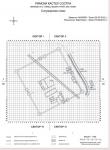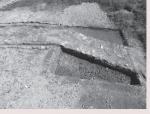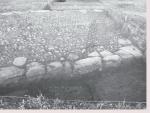Summary (English)
SOSTRA (Ivan Hristov – ivchristov70@abv.bg) A section, 15 m long, from the Roman road Ulpia Oescus – Philippopolis was discovered. The road was 7 m wide, situated at 20 m to the east of the fortification wall of castellum Sostra. The road had a curb built of ashlars and was paved with boulders. A pit was explored, containing Late Antique sherds and a copper coin of Valens. The earliest eastern fortification wall was documented, constructed by the soldiers of Cohors II Matiaca during the second half of the 2nd century AD. The wall was 1.90 m wide and c. 130 m long, with foundation 0.40 – 1 m deep, built of boulders bonded with mud. Two rectangular towers were probably situated from its inner side. The beginning of the construction of the castellum dated to c. AD 147 with an order by Antoninus Pius, according to the inscription on an altar discovered in Sostra. The ditch of the early castellum was documented, with V-like cross-section, 5 m wide and 2 m deep. It contained sherds of the second half of the 2nd century AD and a provincial bronze coin of Caracalla, dating the filling of the ditch and the construction of the later fortification wall of Sostra during the reign of Septimius Severus or a little bit later. The second construction period of the castellum dated to AD 200 – 250. In that period, the soldiers of Cohors II Matiaca were still stationed in the castellum and in AD 198 they placed a votive inscription in honor of Septimius Severus. The third construction period of Sostra began in AD 254 during the reign of Gallienus and lasted at least one decade after his death. The finds from the excavations included coins, a plate from a chainmail, a fragment from a bronze statue and sherds of the second half of the 2nd – 3rd centuries AD.
- Ivan Hristov - National Museum of History
Director
Team
Research Body
- National Museum of History






![Download [PDF]](/excavation/skins/fasti/images/results/download_sml.png)

